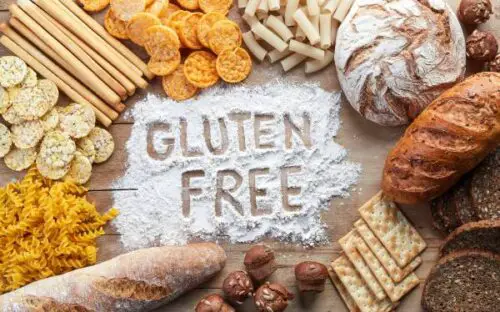Some people don’t mind what they consume when it comes to food. However, those with dietary restrictions and food allergies must check the labels every time. Knowing what you’ll be eating is crucial before you put something in your mouth. In particular, gluten is an allergen as common as peanuts.
You may have already seen countless products with a ‘gluten-free’ label and several others saying they’re ‘grain-free.’ But are these two similar or interchangeable? Keep reading to know the differences between these two before you go for your grocery runs.

Grain-Free
1. What Are Grains?
Grains are edible seeds from cereal plants, which look similar to tall grasses. Rice, barley, wheat, and oats are common grains that many people around the globe eat daily. They comprise the grains in a balanced diet and provide humans with energy.
But people who prefer to avoid grain products can still receive energy from other natural sources like fruits and vegetables. Grain-free foods from Serenity Kids are a great example of this.
2. Examples Of Grain-Free Food
Grain-free refers to any food that doesn’t contain grains. Oats and rye are two examples of grains frequently used in processed foods. Wheat is also commonly found in bread, cereal, pasta, and snacks like cookies and pastries. However, it’s an allergen that negatively affects many people who are sensitive to it.
If you have a wheat allergy, the best you can do is to steer clear of food with grain ingredients. Some options available are any product with grain-free labels. Meat, fruits, and vegetables are other food choices that don’t have grains. People who religiously follow a grain-free diet also include the following ingredients in their meals:
- Cassava flour
- Potatoes and sweet potatoes
- Carrots
- Pumpkins
- Quinoa
- Buckwheat
These food items are safe to eat for anyone with wheat allergies. Typically, if a product is labeled gluten-free, it should also be grain-free.
3. Symptoms Of Grain Allergies
People with grain allergies often experience symptoms such as swelling and itchiness in the mouth and throat. Some have skin reactions, nasal congestion, nausea, and headaches after consuming something with grains. Moreover, the most adverse reactions to a wheat allergy include diarrhea, breathing difficulties, and anaphylactic shock.
4. What To Avoid
Some grain allergy symptoms are debilitating. Consequently, you should be meticulous in choosing what you eat and avoid consuming meals with grain products.
It would be best to keep an eye out for the following:
- Semolina
- Soy sauce
- Couscous
- Wholegrain bread
- Bran
- Wholegrain pasta
- Some plant-based meat alternatives
- Any grain or wheat-derived products like wheat flour
Grain-free diets usually forgo all types of grain. However, it’s possible to find grain-free food containing gluten, which some people shouldn’t consume.
Gluten-Free
1. What Is Gluten?
Gluten is a binding protein found in barley and wheat. Other grains like rye, graham, and farro contain gluten. It makes food like pizza and bread appear stretchy in appearance. Hence, gluten-free food tends to fall apart more quickly than its gluten-containing counterparts.
Typically, not all grains contain gluten. Corn, millet, and rice are some gluten-free grains. Despite that, cross-contamination is possible. So, it’s vital to check labels for allergy warnings.
2. Examples Of Gluten-Free Food
Some standard, unprocessed food products available in most supermarkets are already gluten-free. These items include the following:
- Fresh fruits and vegetables
- Unprocessed legumes, beans, and nuts
- Lean meats and fish
- Eggs and poultry
- Low-fat dairy products
- Tofu and soy
- Starches like amaranth, arrowroot, and flax
- Some wholegrain food
- Corn and rice-based cereals
Due to the growing number of people with diagnosed gluten intolerance or celiac, many food businesses offer gluten-free options. Most of the time, you’ll see the words ‘gluten-free’ in menus and food packages. These products don’t contain grains carrying gluten, which makes them safe for gluten-intolerant people to eat.
3. Symptoms of Gluten Intolerance And Celiac
Nearly 6-7% of the U.S. population are sensitive to gluten. More may even be undiagnosed, so the actual number might be higher than the official records. Additionally, some wheat-allergic individuals might not be gluten intolerant. However, they’ll only know what they have with a proper diagnosis.
People with gluten intolerance often exhibit similar symptoms as those with wheat allergies. Diarrhea and headaches are the usual signs. But a gluten reaction may manifest as bloating, brain fog, depression, and anxiety.
On the other hand, celiac is a severe condition and a form of gluten intolerance. People with celiac disease may have autoimmune disorders, anemia, or limb numbness.
4. What To Avoid
People who eat gluten-free food specifically avoid grains containing gluten. They can still consume certain grain products. The food they have to avoid includes the following:
- Traditional pasta and dough
- Most bread and crackers
- Flour tortillas
- Most breakfast cereals
However, they’re recommended to avoid some grain-free food, too. Not all grains and grain-free food are gluten-free. As mentioned, some gluten-free grains may still have traces of gluten from cross-contamination. Some products may also have hidden gluten. So, always read the ingredients list of all the food you eat and look for an FDA-approved seal.
Final Thoughts
In conclusion, ‘grain-free’ and ‘gluten-free’ may go hand-in-hand but are not interchangeable. Grains are seeds from certain plants, and gluten is a protein from certain grains.
Food with grain-free labels doesn’t contain grain products. On the contrary, gluten-free diets may have grains. So, people with gluten intolerance may still consume grain-derived food.
Notably, it’s also possible for some individuals to have wheat allergies but tolerate gluten. So, anyone with a suspected gluten or grain intolerance should always check food labels. They should also get a diagnosis from their doctor since wheat, and gluten allergy symptoms may coincide.





